Hong Kong China offers a fascinating blend of old and new. Skyscrapers tower over peaceful temples. Busy streets hum with vendors selling snacks you will want to try. This city by the sea knows how to welcome visitors with open arms and rich culture. Whether you enjoy markets filled with color, traditional crafts, or food that warms your soul, Hong Kong does not disappoint. In this guide, I share stories, practical tips, and some of the lesser-known gems you can find in this energetic city.
Table of Contents
Hong Kong’s Mix of Tradition and Modern Life
Walking in Hong Kong’s streets, you feel a rhythm unlike anywhere else. Ancient shrines stand quietly among towering office blocks. You might see a group of elderly men playing mahjong in a small park as the noisy city surrounds them. This city has one of the busiest ports in the world, yet it also hosts peaceful bamboo gardens and small fishing villages on its outlying islands.
If you enjoyed learning about Hong Kong’s history, the Star Ferry’s charming journey offers a unique waterfront perspective on the city’s past and vibrant daily life.
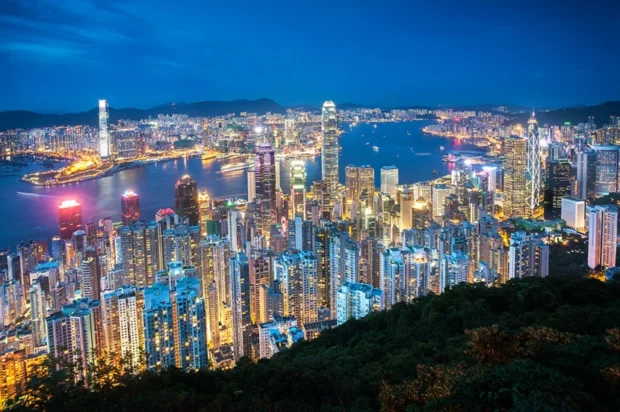
One quirky fact: the famous Star Ferry has been crossing Victoria Harbour since 1888. Taking this ferry is like stepping back in time while enjoying one of the best views of Hong Kong’s skyline. It costs just a few Hong Kong dollars and offers a fresh breeze away from the crowded streets. For more on its schedule and route, visit the Star Ferry official site.
Where to Stay and How To Move Around
Choosing where to stay depends on what you want to experience. If you love shopping and restaurants, Mong Kok is alive day and night. For a calmer pace, the Mid-Levels area offers a quieter vibe and easy access to hiking paths. Many locals recommend staying near Central district if you want excellent transport links and quick trips to major sights.
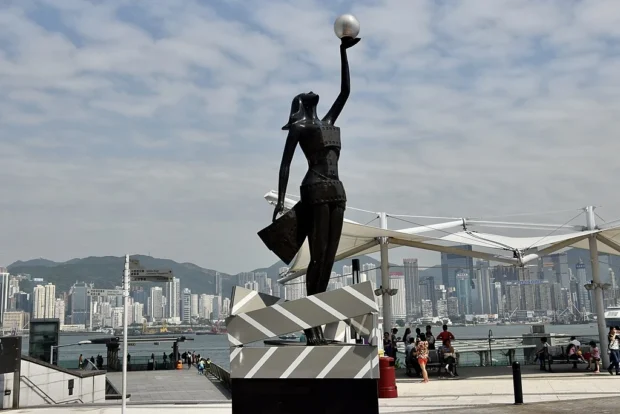
Getting from the airport is straightforward using the Airport Express train. It whisks you to the city center in about 24 minutes. From there, the famous MTR (Mass Transit Railway) system connects every corner of Hong Kong. Trains are clean, frequent, and easy to understand. A special card called the Octopus card works like a charm-for trains, buses, and even some shops.
One small note: traditional taxis use different colors for different areas, so it helps to know your destination region if you consider alternatives like minibusses or buses. But public transit remains the favorite of most visitors for convenience and speed.
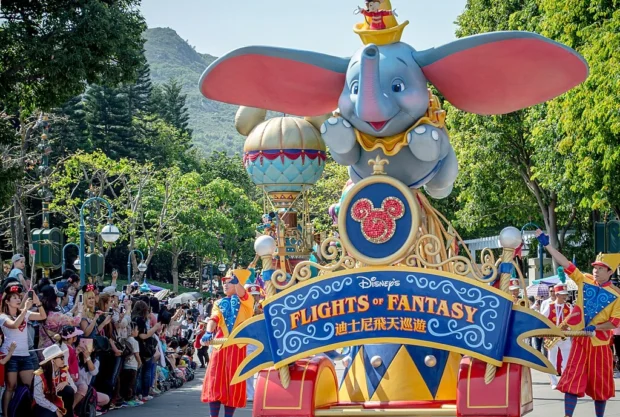
Colors and Flavors of Hong Kong’s Food
Hong Kong food is a journey itself. Think steamed dumplings with thin, translucent wrappers releasing a burst of juicy pork or shrimp. Street markets in Kowloon invite you to try dried seafood, egg waffles shaped like honeycombs, and sweet milk tea poured from high above cups to make it smooth.
In the evenings, head to Temple Street Night Market. It’s a place where neon lights glow over stalls selling noodles, seafood, and desserts. Locals eat dai pai dong style-outdoor stalls with plastic stools-where chopsticks tap on bowls filled with rich broth and fresh ingredients.
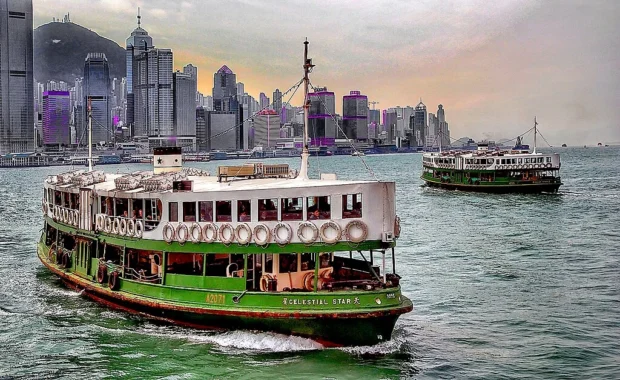
Try trying dim sum-it is more than just bite-sized treats; it’s a ritual. Tea flows endlessly as steaming plates of siu mai and char siu bao arrive at the table. Chefs here have kept this art alive for generations.
Secret Finds Away From the Crowds
While the Peak offers stunning views, did you know you can also visit the Tai O fishing village? Here, stilt houses line the river, and the salty ocean wind mixes with the smell of dried fish, a staple of local diets. Tai O feels like stepping into a different time, where boats dock beside wooden homes and traditional nets are mended by hand.
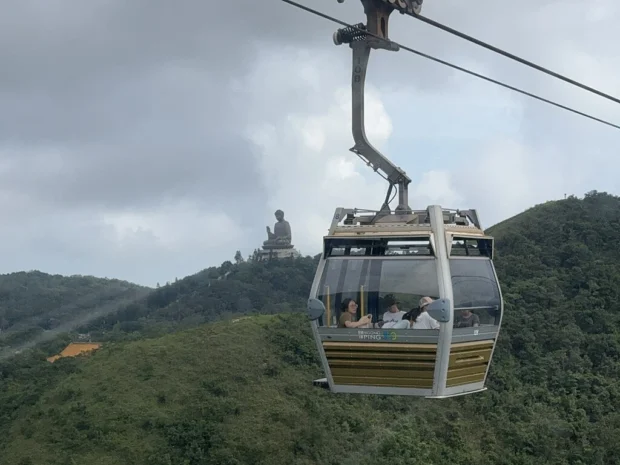
Another quiet spot is the Nan Lian Garden in Kowloon. This classical Chinese garden has curved bridges, carved wooden pavilions, and pools where koi fish swim lazily. Many visitors miss this beauty rushing instead towards the busy streets. It’s a place perfect for a calm afternoon walk and a few moments of reflection.
Customs and Culture To Remember
Hong Kong has deep respect for traditions. When visiting temples, it is polite to take off your shoes before entering and avoid loud conversations inside. Giving gifts or money in red envelopes during festivals is an important Chinese custom symbolizing luck and prosperity.
After enjoying the bustling markets and serene gardens of Hong Kong, consider visiting the Tian Tan Buddha on Lantau Island for a peaceful cultural experience.
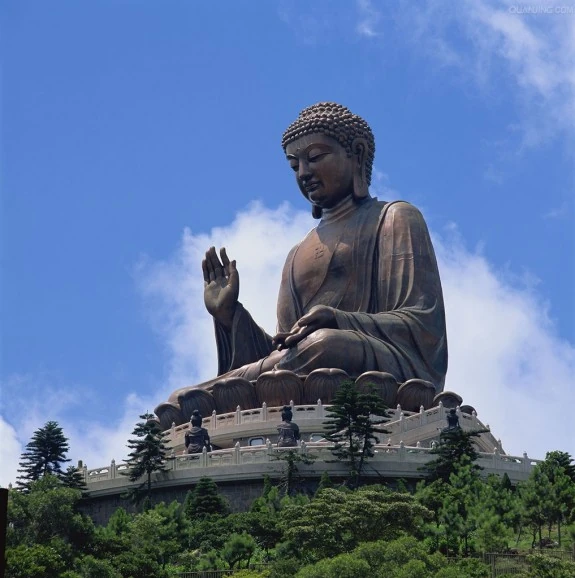
Also, never point with your chopsticks or leave them standing upright in your rice bowl-this resembles funeral rites and brings bad luck. A simple bow and smile go a long way in showing respect when speaking to elders.
I found locals to be warm and welcoming. Many enjoy sharing their love of crafts and food if you ask kind questions. Shops selling ceramics and folk art keep old skills alive, and artisans still work with bamboo and textiles in small workshops away from tourists.

Landmarks That Tell Hong Kong’s Story
Victoria Peak is known worldwide, but few know the narrow trams that climb steeply to the top date back well over a century. The route offers glimpses into the city’s growth from a fishing village to a major port.
Visit the Man Mo Temple, dedicated to the gods of literature and war, where coils of incense hang from the ceiling, slowly burning and filling the air with a soft fragrance. Such places reveal much about Hong Kong’s rich spiritual life.
For a stunning viewpoint on Hong Kong’s skyline, consider reading about Victoria Peak and how to get there with ease.
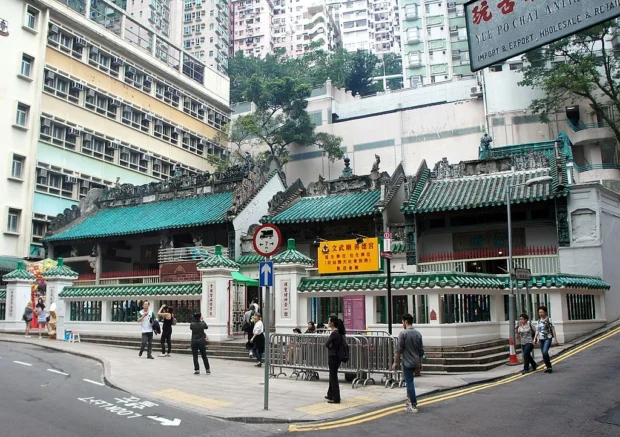
For histories of trade and colonial days, the Hong Kong Museum of History holds fascinating exhibits. Here you learn how spices, silk, and ceramics shaped the city’s place on the world stage. These items traveled along routes connecting East and West, leaving marks in culture and architecture.
Markets Full of Life and Color
Explore the Ladies’ Market to find clothes, souvenirs, and good bargains. Vendors call out with smiles, eager to chat and offer small stories about their products. The Jade Market is another fascinating stop. Jade holds special importance in Chinese culture, representing purity and protection. You may see lively buffets where stones are carved into delicate jewelry or talismans believed to bring good health.
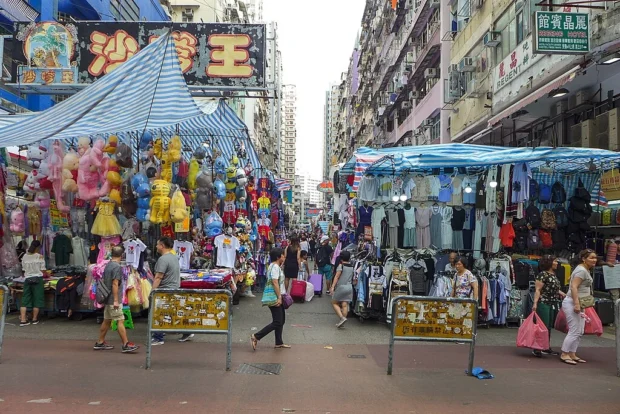
Farmers’ markets pop up around the city on weekends, offering fresh fruit and handmade snacks. Trying these foods amid conversations with sellers gives a special appreciation for the daily life here.
Final Thought on Visiting Hong Kong
Hong Kong China is a place where bright city lights meet quiet moments under pagoda roofs. It is a city shaped by sea and mountain, by crafts and commerce. Take time to savor the tastes of a noodle soup, watch a sun setting over the harbor, or listen to the sound of temple bells mixed with the chatter of markets. Hong Kong invites curiosity and respect-allow yourself to be carried not just by popular sights but by the stories and people who give the city its heart.
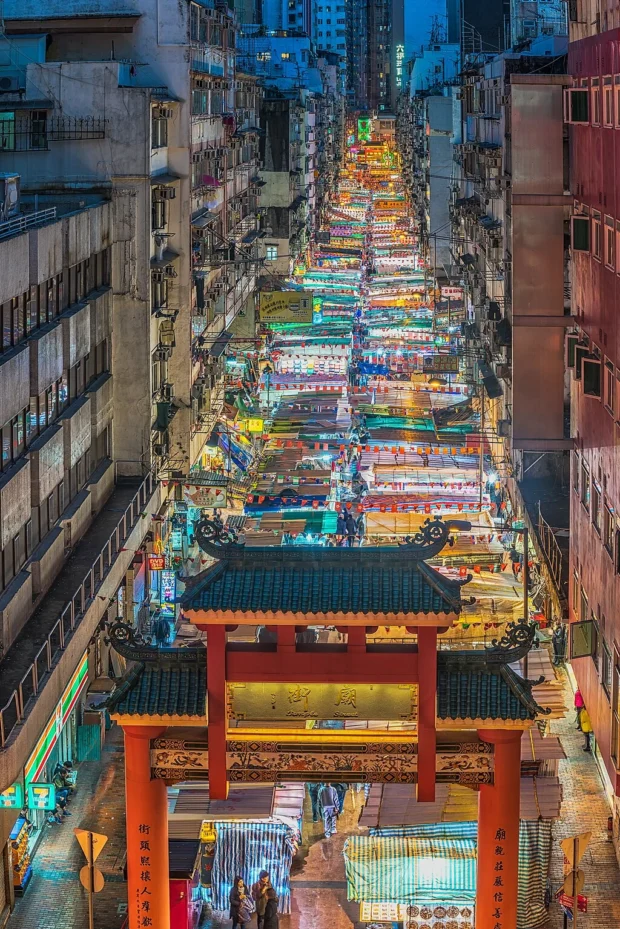
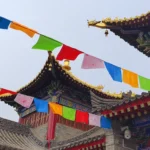
A Chinese tour guide with deep knowledge of the Far East, its traditions, and culinary secrets.
- Hong Kong Island Skyline 2009 by WiNG on Wikimedia Commons – cc by-sa 3.0
- Hong Kong Night view from Victoria Peak by Yungeditor on Wikimedia Commons – cc by-sa 4.0
- Hong Kong Film Awards statue at Garden of Stars, Hong Kong (Ank Kumar, Infosys Limited) 12 by Ank Kumar on Wikimedia Commons – cc by-sa 4.0
- Disneyland Hong Kong China 3 by Philip Nalangan on Wikimedia Commons – cc by 4.0
- Ngong Ping 360 Cable Car No.108 22-06-2024 by LN9267 on Wikimedia Commons – cc by-sa 4.0
- Big-Buddha by Kitakitzcom on Wikimedia Commons – cc by-sa 4.0
- 中国香港海洋公园 China Hong Kong Ocean Park China Xinjiang Urumq – panoramio (17) by 罗布泊 on Wikimedia Commons – cc by 3.0
- Chrám Man Mo, Sheung Wan, Hongkong by Ondřej Žváček on Wikimedia Commons – cc by 2.5
- Tung Choi Street 201705 by Wpcpey on Wikimedia Commons – cc by-sa 4.0
- Colorful Asian street market (Unsplash) by Steven Wei stevenwei on Wikimedia Commons – cc0
